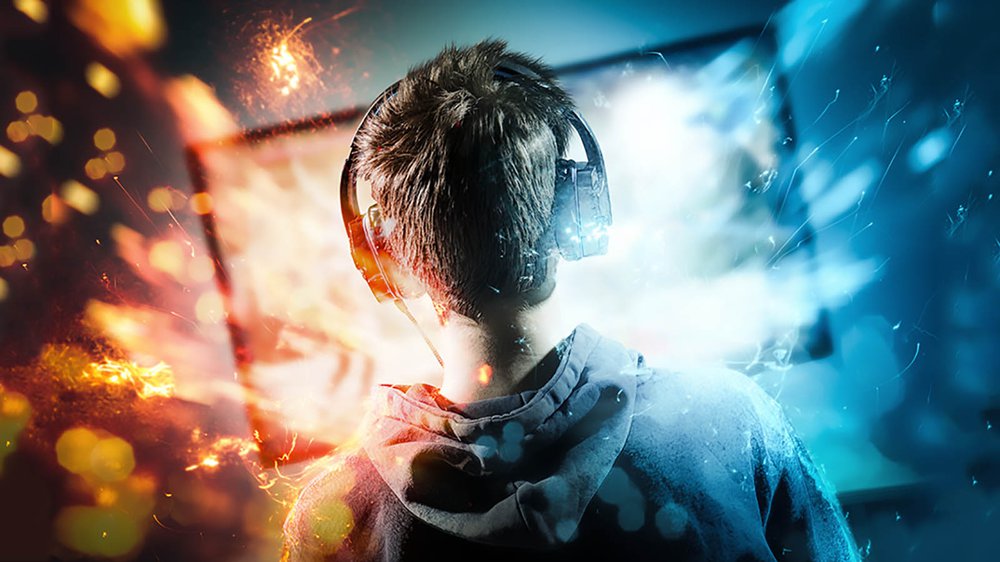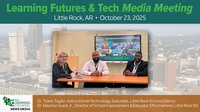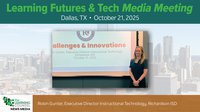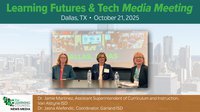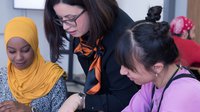Today’s Kids Learn Differently
In the previous article, Learning for the Always-On Generation (Part 1), readers were introduced to the observation that today’s kids are different. They talk differently, play differently, communicate differently, and most importantly, they learn differently than previous generations. Thanks in large part to digital bombardment, the pervasive exposure to television, smartphones, computers, gaming consoles and tablets regularly, they are neurologically wired differently and prefer to learn using different methods and tools than learners of the past.
Some veteran teachers are noticing their traditional teaching methods are just not as effective with students in classrooms today as they once were. Many educators are observing that the students of today prefer to learn differently. This new classroom reality is creating quite the debate about current teaching methods and the ability of the digital generations to learn.
Digital bombardment has transformed today’s learners into digital learners. Moreover, because of this transformation, the digital generations have developed new preferences for learning. Jukes, Schaaf and Mohan (2015) identified nine key learning attributes of the digital generations. In the next post of this series, readers will explore these new attributes of digital learning and learn about tools and strategies to use in order to align with their students’ learning preferences.
Attribute #1: Digital learners prefer receiving information quickly from multiple, hyperlinked digital sources. In the past, traditional learning involved a controlled release of content from a teacher or disconnected, sometimes outdated source.
According to Larry Rosen (2010), three-quarters of teens and young adults check their devices every fifteen minutes or less, and if not allowed to do so, they become highly anxious. Many connected individuals (both adults and children) cannot get through a day without continually jumping into their digital worlds. Being connected to everything has become so deeply embedded in our lives that living without it seems almost impossible.
Establishing a balance between the real world and our virtual ones is a crucial skill we must all exercise and develop. Today, digital learners have access to the greatest collection of information in human history—the Internet. Students can access over one trillion interconnected webpages and resources and use them to construct their own knowledge. However, to effectively use the power of the Internet, students and teachers alike must be able to distinguish between the flash and substance of online resources.
Educators can align their instructional strategies to tap into this learning attribute by:
- Promoting the use of online sources of information for preliminary or introductory research: Wikipedia or online databases such as Culturegrams and World Book Online are a great resource. Ask your specific school system for what resources they provide to educators and students.
- Utilizing WebQuests for connected learning experiences where learners must perform online research using resources that have been curated by their educators. An excellent source for WebQuests: https://webquest.org/
Attribute #2: Digital learners prefer parallel processing and multitasking. In the past, traditional models of learning promoted linear processing and single or limited tasks.
Humans have always been able to multitask. Technically, it is called continuous partial attention—where we randomly switch between tasks, deciding which one to do next, and time-slice our attention. We do it every day. We drive down the road, listen to music on the radio, think about our to-do list for the day and carry on a conversation with our passengers.
With today’s generation of digital kids, this multitasking all happens much faster. The digital generations are sending texts, watching YouTube, listening to music, talking on smartphones, scanning websites and generally counting on the Internet as their external, second brain. As a result, their minds must continually skim and skip between tasks to keep up. This butterfly brain effect can be challenging for educators trying to get students to focus on essential tasks.
The truth is, multitasking cognitively demanding activities proficiently is biologically impossible – then the human brain does not work in that fashion. On the other hand, non-cognitively demanding activities can be improved over time with practice. What the research says is that productive multitasking is really about having a good memory, capable of being able to pay attention to several familiar tasks at one time, while also being highly adept at task-switching. This isn’t the way the older generations grew up. This is not what most of us experienced as children.
John Medina’s Brain Rules is an awesome book that explores the multitasking myth. Medina (2008) says that educators need to acknowledge that multimedia multitasking is an everyday reality of life—that students do not suffer notable cognitive shortcomings as they multitask; rather, they are learning more, and they are more adept at finding answers to deep questions, in part because they can search effectively and access collective intelligence. He also cautions us that the solution to the challenges of multitasking is not just to remove technology and other distractions because they are too intricately woven into the digital generations’ lives.
Educators can align their instructional strategies to tap into this learning attribute by:
- Task switching must be kept to a minimum. If digital learners are performing more than one task at a time, it should not be cognitively demanding. Also, the two or more tasks they are attempting to perform should be ones they are already proficient in.
- Speech-to-text allows learners to record notes, write papers, and control their devices using their voices. For some, this significantly improves productivity and allows for multitasking to occur in a digital environment.
Attribute #3: Digital learners prefer processing pictures, sounds, color, and video before they process text. The traditional has been to provide learners with text before pictures, sounds, color, and video.
Due to advances in and the prevalence of digital technologies and media, the digital generations have grown up in a remarkably visual world. Images have the ability to communicate meaning quickly. Burmark states (2002) that the eye processes images 60,000 times faster than the eye processes the meaning of text. From an early age, the digital generations have been regularly exposed to television, computers, tablets, videos, and digital games that put colorful, highly expressive, high-quality, realistic, multi-sensory experiences such as sight, sound, and touch - and in the near future smell, taste, and 3D - that contain little if any text. As a result, many of the digital generations prefer to process pictures, sounds, color, and video before they process text. It is a natural conclusion that they prefer their media in the same way they use it at home.
Educators can align their instructional strategies to tap into this learning attribute by:
- Using Video, also a powerful instructional medium for the digital generations. YouTube, TeacherTube, Khan Academy, and TED have millions of high-quality educational videos on just about any content areas, ready for learners to view.
- Adding images to instructional presentations and materials. The images must be high quality and colorful because they have to capture the attention of a generation of learners that grew up on high-definition television, tablets, and gaming devices.
In the next installment of The Brief History of the Future of Education series, we will examine the final six learning attributes of the digital generations.
About this Post
This post is a part of The Brief History of the Future of Education series. Based on the newly-released book written by Ian Jukes and Ryan L. Schaaf, this series will explore the TTWWADI mindset in schools, examine school’s challenges of teaching in the Age of Disruptive Innovation, traverse the new learning attributes of the digital generation, predict what learning will look like 20 years from now, observe the essential next-generation skills schools must cultivate in its learners to prepare them to survive and thrive in the future, and consider the new roles educators must adopt to stay relevant in the profession.
About the Author
Ryan Schaaf is Associate Professor of Educational Technology at Notre Dame of Maryland University and faculty member in the Digital Age Learning and Educational Technology program at Johns Hopkins University. His passion is working with educators to explore the potential of gaming in the classroom, the characteristics of modern-day learning and learners, and exploring emerging technologies and trends to improve education. Follow him on Twitter @RyanLSchaaf.

